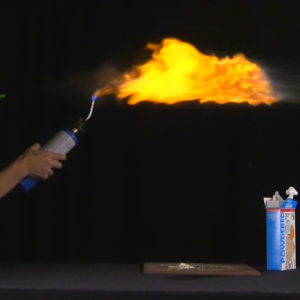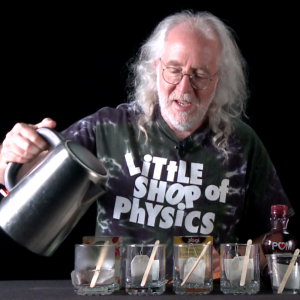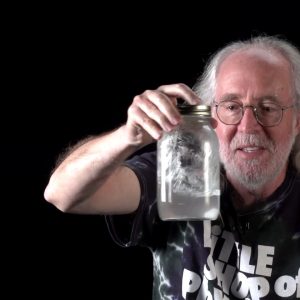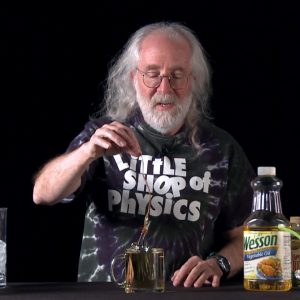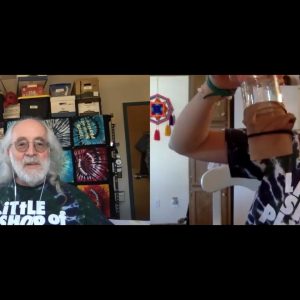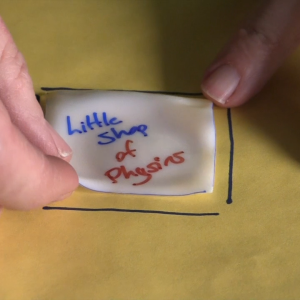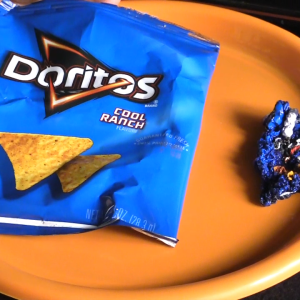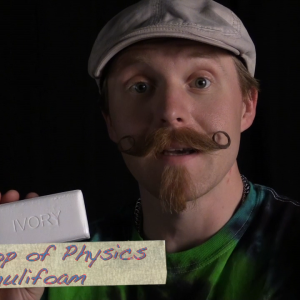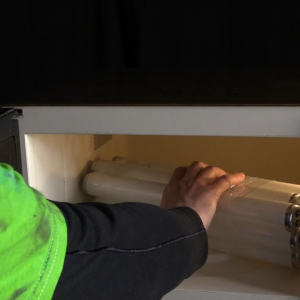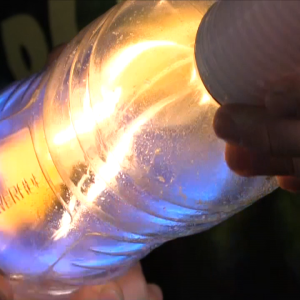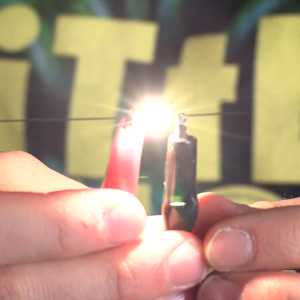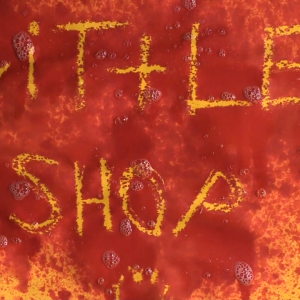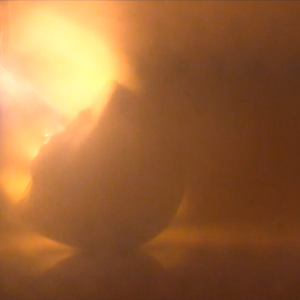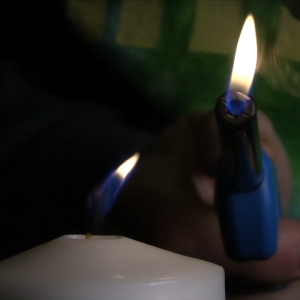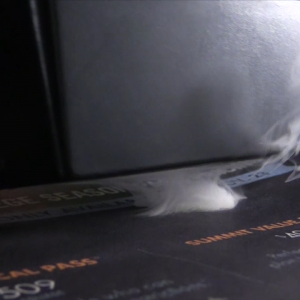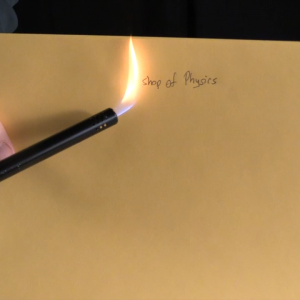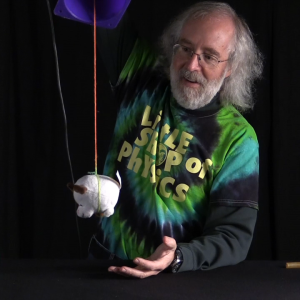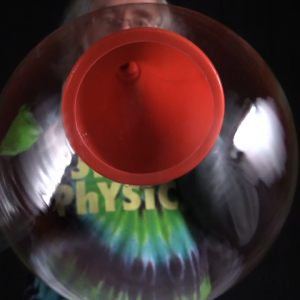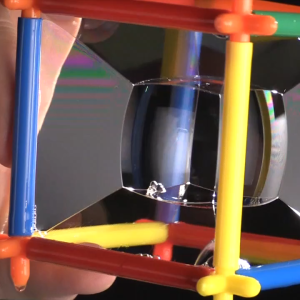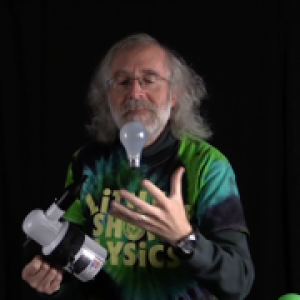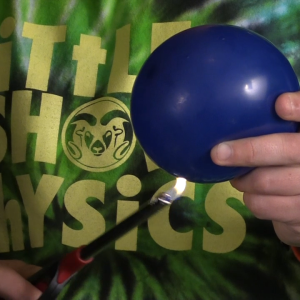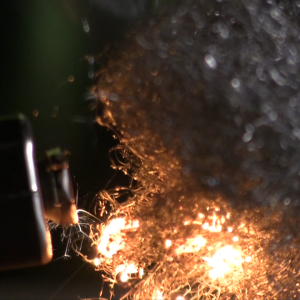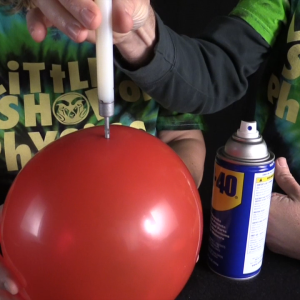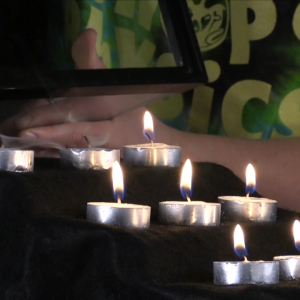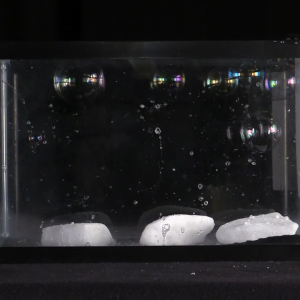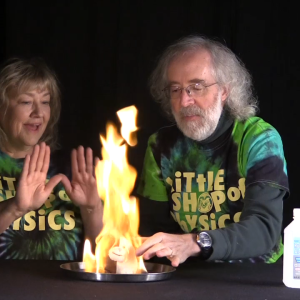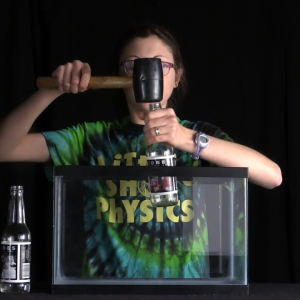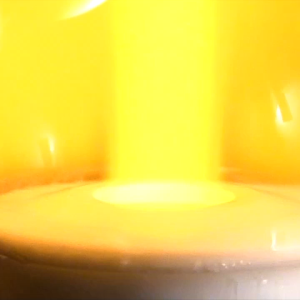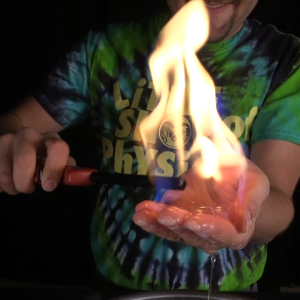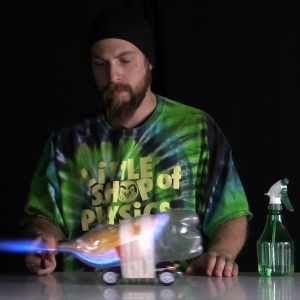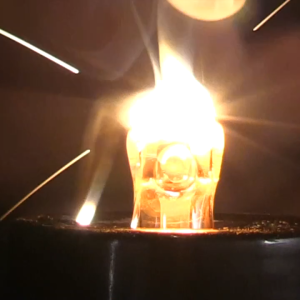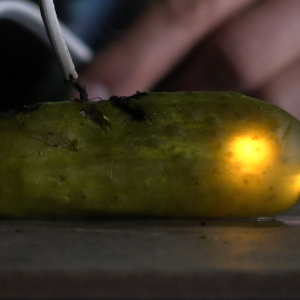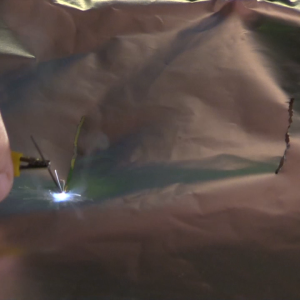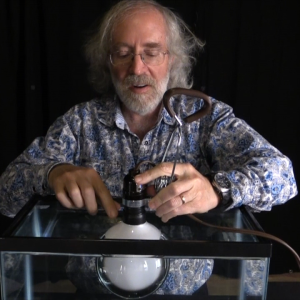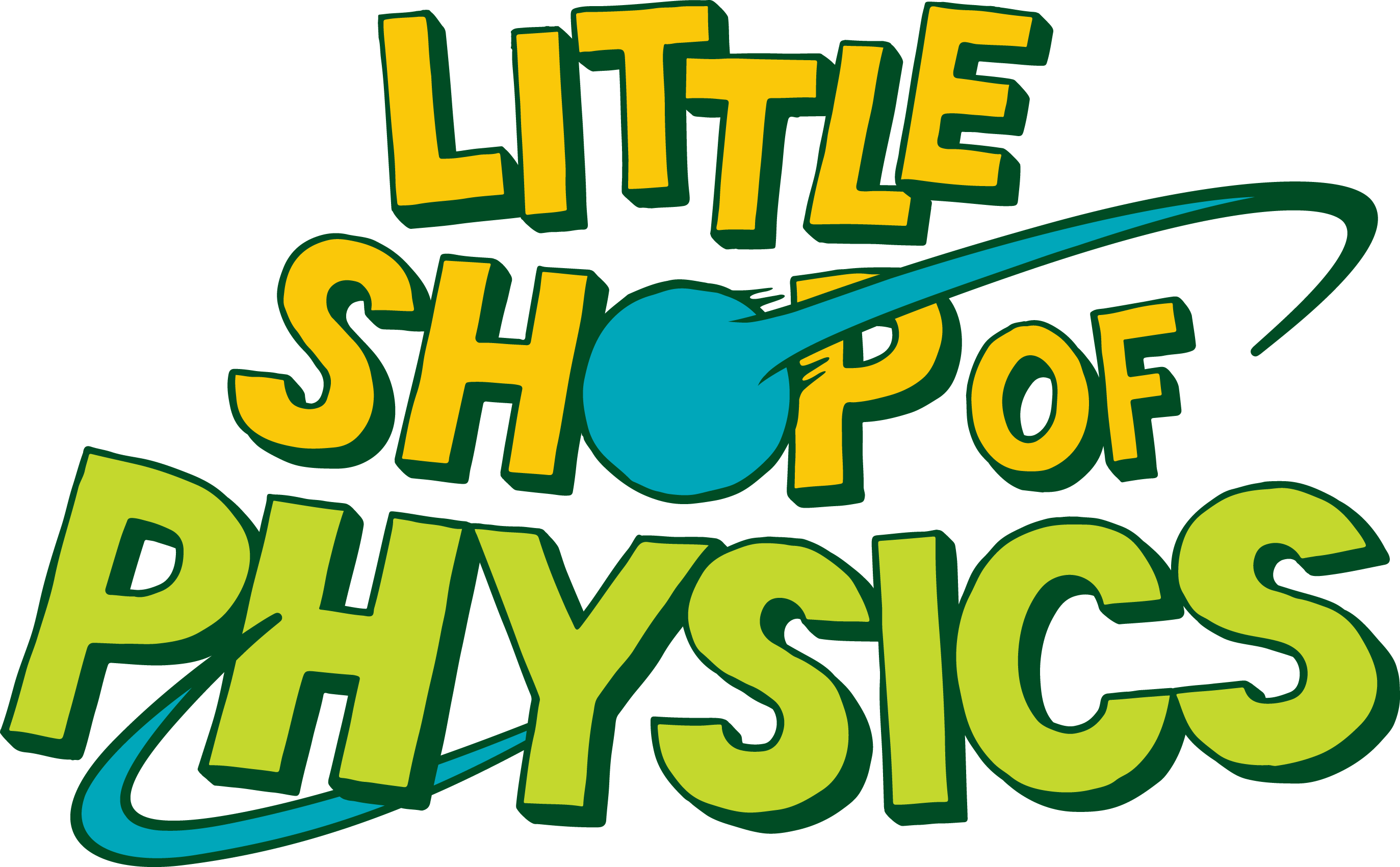Flash Science: Colorful Concoctions
Here’s a fun one to try at home: Brightly colored teas and juices often undergo cool color changes when you add vinegar or baking soda. It’s some fun, colorful, kitchen chemistry that anyone can try! Colorful ConcoctionsFlash Science: Wash Your Hands
One of the best weapons against the coronavirus (and other similar nasties)? Soap. This video shows how soap can disrupt a cell-like structure with an enclosing layer made of kerosene and plastic, just as soap disrupts the lipid bilayer that surrounds the coronavirus particles.
Flash Science: Index of Refraction
The Little Shop of Physics team is making more episodes of a series we called Flash Science—quick, simple experiments that anyone can do—with a twist: We’ll do them in the studio, and then we’ll join some folks at a distance to see how it works out in the world. In this installment, we see how [...]Flash Science: Surface Tension and Pressure
Can a mesh fabric trap water in a glass? Sometimes! Brenna and Brian explain it all in this simple experiment!
Flash Science: Pixelated Picture
Beads on a picture create an instant low tech pointillist painting.
Flash Science: Heat Shrinking Plastic
A piece of clear plastic shrinks and turns white with heat. A great way to re-use #1 containers!
Flash Science: Chips in the Microwave
The electric fields inside of a microwave cause sparks, heat, and even shrinks a bag of chips!
Flash Science: Soap in the Microwave
A bar of soap in the microwave grows to tremendous proportions.
Flash Science: Lightly Microwaved
You can light a bulb in the microwave (for a little while) and the electric fields in the oven will cause it to light!
Flash Science: Ping Pong Canon
A water bottle and a grill igniter make a ping-pong ball launcher.
Flash Science: Worlds Simplest Motor
This week, Kenn shows us how to build world’s simplest motor!
Flash Science: Graphite Glow
This week, Rachel shows us an awesome experiment which uses electricity to heat up the graphite in a pencil lead, making it glow very bright!
Flash Science: Secret Message With Windex
Goldenrod paper turns red when ammonia or other base is added. Rachel shows us how we can use this to write secret messages!
Flash Science: Flashy Grape
A grape makes a great dipole antenna, and makes a great (small and safe) series of sparks in the microwave.
Flash Science: Flaming Smoke Fuse
Smoke from an extinguished candle makes a “fuse” that relights it.
Flash Science: Heat Flash
The heat from a camera flash makes a puff of smoke from a black surface.
Flash Science: Erasing With Heat
A pen with thermochromic ink is erased with heat and made to reappear when cold.
Flash Science: What Keeps the Ball in the Cone?
A small ball is placed in a funnel—and cannot be blown out.
Flash Science: Bubble Trumpet
A bubble on a stadium horn… Will it pop when the horn is played?
Flash Science: Bubbles Squared
A plastic frame can be used to create square—and other unusual shape—bubbles.
Flash Science: Arc of the Air
A stream of air is used to levitate a small ball—and also a light bulb.
Flash Science: To Pop or Not To Pop
A water-filled balloon can be held over a candle or a torch, and not pop!
Flash Science: Steel Fire
Fine steel wool will burn brightly with the help of a 9 V battery.
Flash Science: Needle Through a Balloon
You can push a knitting needle through a balloon if you take certain precautions.
Flash Science: Pouring Air
Carbon dioxide can be poured like water, extinguishing candles.
Flash Science: Flame Hound
A stuffed animal saturated with alcohol and water can be set on fire, and touched while alight.
Flash Science: Water Hammer
Using the power of air pressure to blow out the bottom of a bottle.
Flash Science: Hydrogen Bubbles
Passing a current through water makes hydrogen and oxygen gas, which fill a bubble that can be ignited.
Flash Science: Alcohol Rocket
Alcohol vapor in a plastic bottle is lit, giving forward propulsion.
Flash Science: A Glass Conductor
We typically think of glass as an insulator, but it will conduct electricity if it gets hot enough!
Flash Science: Electric Pickle
A ground fault protected cable passes electricity through a pickled cucumber, this produces a surprising glowing effect in the cucumber.
Flash Science: Plasma Cutter
A pencil lead and some batteries make a small plasma cutter that we use to etch a pattern in aluminum foil.
Flash Science: Sweet Fire
Some powdered sugar, a straw and a propane torch produce a flame, that is circus-like in its drama.
Flash Science: Reflecting in the bath
An internally frosted, large light bulb is dipped into a fish tank of water, and the total internal reflection effect produces ‘other-worldly’ consequences to how the bulb looks in the water. The bulb goes from white to a silvery orb. Turning the bulb on, produces a similar, but more alluring effect.

